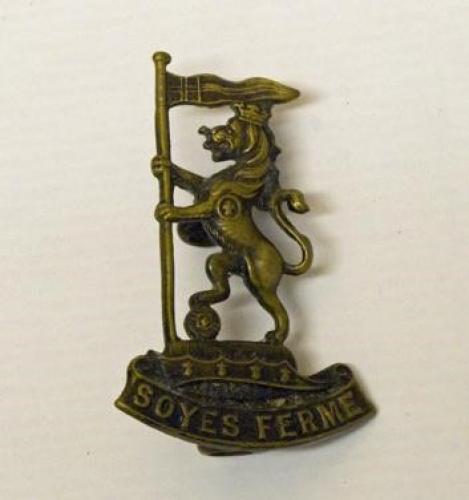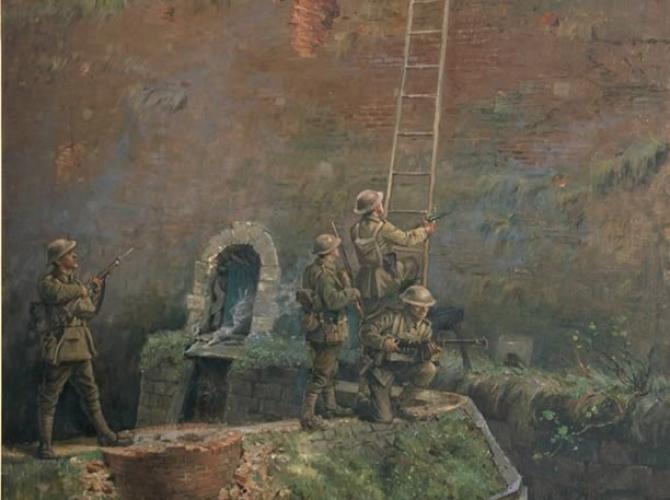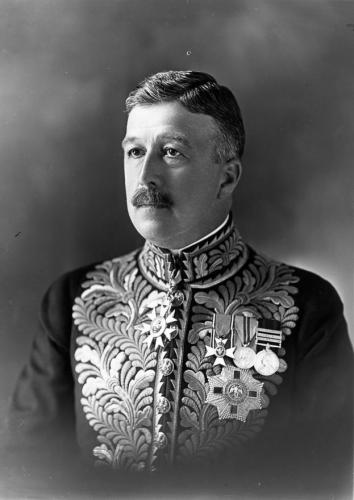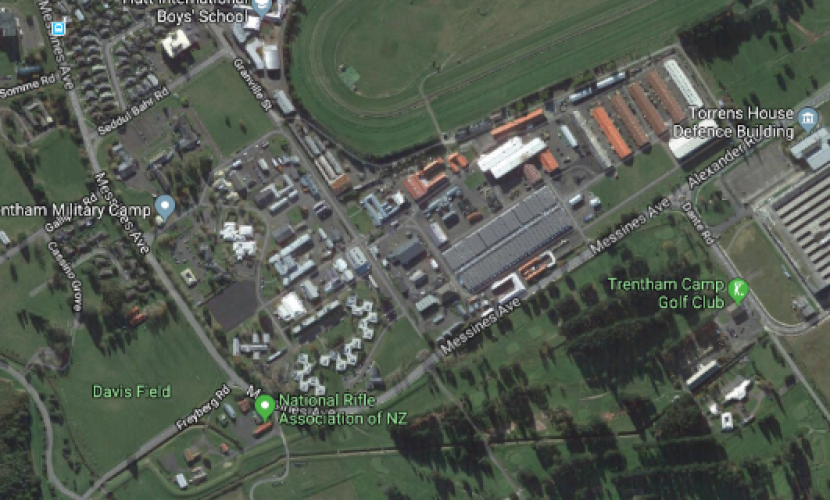293 Stand Fast Street Trentham Military Camp Upper Hutt, street sign 2018
Reason for the name
This street was named after the motto of the Trentham Regiment leading to the formation of the NZ Rifle Brigade. Most streets within NZDF Camps and Bases are named in honour of prominent people, battles, campaigns, ships, aircraft and places creating a rich history of our military service.
Stand Fast or “Soyes Ferme” is the motto of the Earl of Liverpool. A motto is a short phrase that is intended to capture the essence of the beliefs and purpose of a government, group, military unit or individual. The scouting movement's famous motto “Be Prepared” is a classic and effective example, as is the Special Air Service motto “Who Dares Wins” The Royal New Zealand Infantry Regiment’s motto “Onward” is a powerful motivator for Corps unity.
Individuals often select or compose mottos to guide how they live their lives. The Charles Swindoll quote “Attitude is Everything” might well be chosen as someone's personal motto to live by.
Author: The Poppy Places Trust
The New Zealand Rifle Brigade’s badge is a brass emblem featuring a lion holding a pennant flag above the words: "Soyes Ferme" STAND FAST.
The New Zealand Rifle Brigade was formed on 1 May 1915 as the 3rd Brigade of the New Zealand Division, part of the New Zealand Expeditionary Force. During the first World War it fought in Egypt, against the Senussi, and then on the Western Front. It was disbanded on 4 February 1919. The story of the Rifle Brigade (which is also a poppy place) and can be read on this website at 295 Rifle Brigade Parade, Trentham Camp.
Along with unit mottos, nicknames are also in widespread use and the nickname of the New Zealand Rifle Brigade “The Dinks” has an interesting history:
The origin of the sobriquet "Digger," as applied to the New Zealand and Australian soldier, is shrouded in mystery. It is known that the men of the Working Battalion, a temporary unit formed of drafts from the three Brigades, occasionally addressed one another as "Digger" when cable-burying in March, 1917, in preparation for the Messines battle. In our Brigade it became fairly common when we were engaged on similar work for the French Army on the northern part of the line in the following July; and, during the long month spent on duty of the same nature in the Ypres Salient just before Passchendaele, its use became fully established. It is probably safe to say that the Australians were the inventors of the term as a form of address or salutation.
Like many other slang expressions, the term "fair dinkum" is not easy of definition. In the same class as the school-boy declaration "honour bright," and the coarser vulgarism "my oath," it would seem to convey the idea that any statement with which it may be used is to be looked upon as absolutely reliable and true. Similarly, any person or thing declared to be "dinkum" is to be considered as possessing the qualities of genuineness and excellence in the highest degree.
The application of the term to the New Zealand Rifle Brigade as a nickname dates from the early days of 1916. On its return from Dabaa, the 2nd Battalion joined the veterans from the Dardanelles then concentrating at Moascar after the evacuation, the 1st Battalion being still at Mersa Matruh. The Riflemen, realizing that the honour and credit of the Brigade were in their keeping, relaxed nothing of their old smartness on parade, more particularly at guard-mounting, and were more punctilious than usual in regard to their soldierly conduct when off duty. The old ill-feeling, almost akin to animosity, was still in the air, and the general bearing of the Riflemen evoked considerable comment, mainly of a derisive nature. No distinguishing colour patch had yet been adopted outside the Rifle Brigade, except by the Samoan Relief Force, and the square "blaze" on the puggaree of the men of the 2nd Battalion was thus all the more conspicuous. With the idea of conveying the impression that the Riflemen were inordinately proud of themselves, the term "The Square Dinkums" was, in derision, applied to the 2nd Battalion, and afterwards, when the other units arrived, to the whole Brigade.
This is the generally accepted opinion as to the origin of the nickname, but there are some who maintain that it came into vogue still earlier, and in this way: When the 1st Battalion's wounded from the Christmas Day fight at Mersa Matruh reached the hospital at Cairo, they were questioned by the Gallipoli patients regarding the details of the action. On learning of the comparatively small number of casualties, one of the veterans, accustomed to the horrors of a very different kind of warfare, exclaimed ironically, "It must have been a 'fair dinkum' fight!" The arrival of the 2nd Battalion soon afterwards was the signal for the modification of the epithet, by an easy process, into the nickname that ever after stuck so firmly.
We were a little sensitive about the nickname when first saddled with it, but in course of time came to look upon it as something to be proud of, realizing that it was used less and less as an expression of scorn till at last it became a term of genuine esteem. Shortened to "The Dinkums," and again to "The Dinks," it was an appellation fully recognized within and without the Brigade, becoming eventually almost official.








